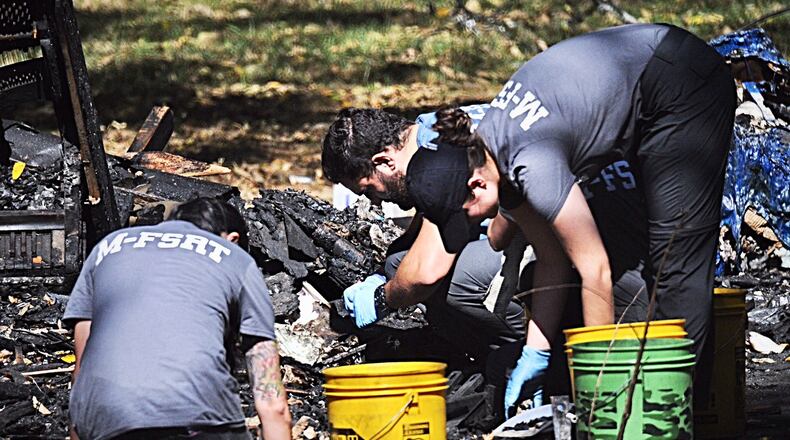The remains are from one body but are at the two scenes, Harshbarger said. Investigators were at a garage on Fountain Avenue in Dayton all day Friday after possible human remains were located there Thursday. Law enforcement also investigated a location in the 1000 block of Richmond Avenue referred to as a “second dump spot,” police reported.
MORE: UPDATE: Remains found in burned garage are human, coroner says
The investigation started Thursday after a person contracted to clean up a fire-damaged garage said he found what appeared to be a bone in the debris. The garage where the remains were found caught fire on Sept. 17. Officials deemed that fire suspicious but initially said no injuries were reported.
Due to the complexity of the case, Harshbarger reached out to Dr. Dennis Dirkmaat from Mercyhurst Univ,. in Erie, Pa., who teaches a master’s degree program in Forensic Anthropology.
Dirkmaat has conducted more than 300 forensic anthropology cases for nearly 30 coroners, medical examiners and the state police in Pennsylvania, Ohio and West Virginia, as well as the FBI.
The cases include nearly 50 field recoveries involving the processing of evidence from human death scenes, and the comprehensive forensic anthropological analysis of over 100 sets of human remains according to the university.
“We’ve dealt with burned bodies and fatal fires in the past. They are very difficult scenes because all of the material in there from the human remains to the boards to everything is burned and has the same coloration,” he explained. “When you have human remains and they are burned to a degree where most of the soft tissue is gone, then it affects the bones and the bones tend to lose organic material and so they tend to warp, fracture and break.”
MORE: Police: Human remains possibly found in recently burned garage in Dayton
Dirkmaat explained that 15 students and one faculty member from his program will carefully go through each scene to determine a story that the remains can tell.
“Our job here is to first properly locate all of the remains, even the tiniest of fragments like broken teeth and things like that,” he said. “And this process is what we call forensic archaeology. We’ve gone systematically through all of the burned debris to find the smallest of human remains.”
The group will assemble all bone fragment evidence, talk to the police about it and then eventually take it back to the medical examiner’s office.
“And eventually compare it to what has already been recovered to determine whether there has been one individual or multiple individuals and then complete what we call a biological profile – which is the age, sex, stature and ancestry of the individual,” Dirkmaat said. “We have 10 to 12 pieces to put together and from that derive our biological profile. The last part is to see if there is any evidence of trauma, or trauma not resulting from the fire.”
He noted on Friday that the initial process does not involve evaluating what exactly has been collected in terms of the biological profile but just trying to find all of the remains so the scene can be released, and then focus on analyzing the remains.
MORE: Body of 53-year-old man pulled from burned garage in Dayton
“Ultimately, what we want to do is reconstruct what happened here in the past,” Dirkmaat said, adding that the bones will be sent to the local crime lab first and then to Pennsylvania.
About the Author
